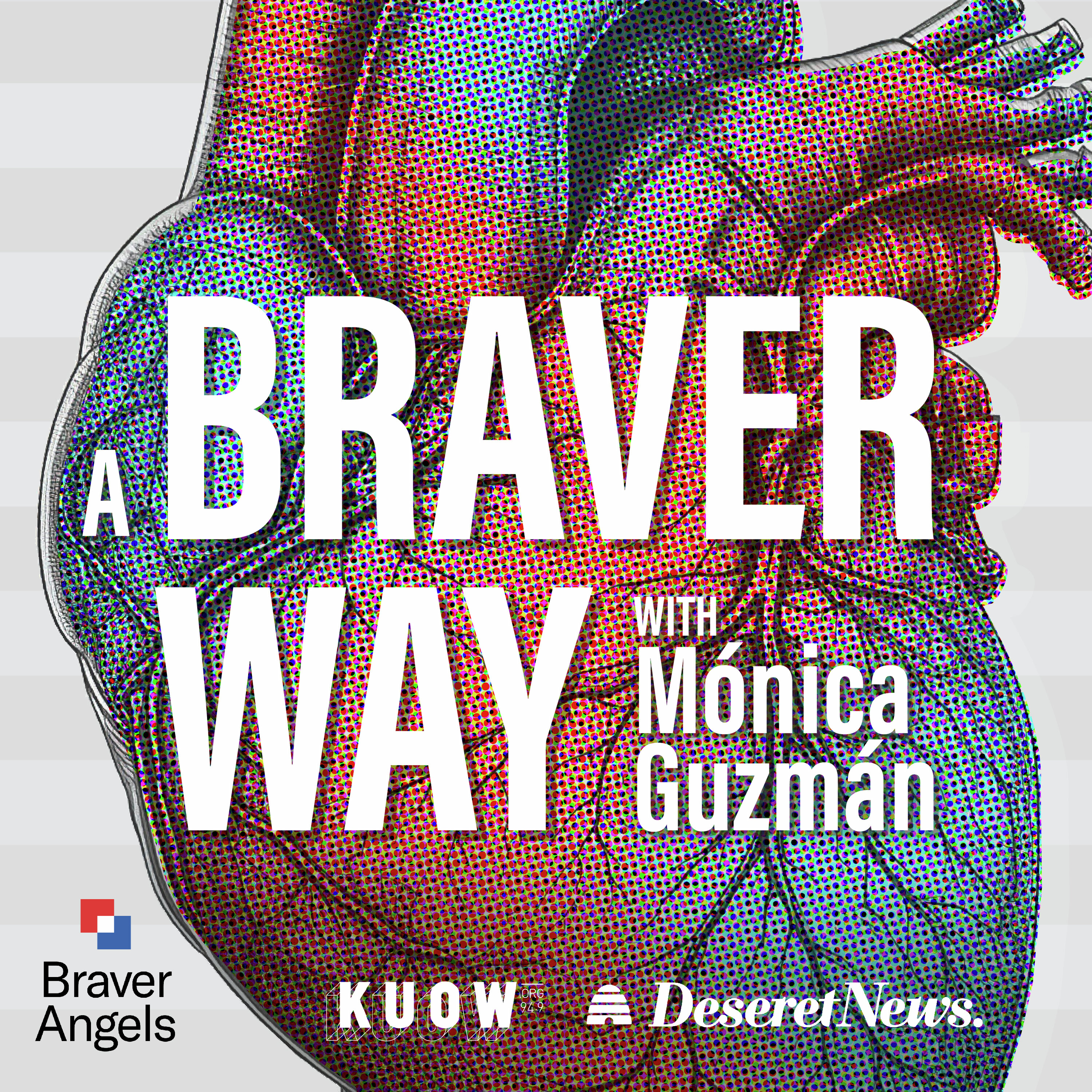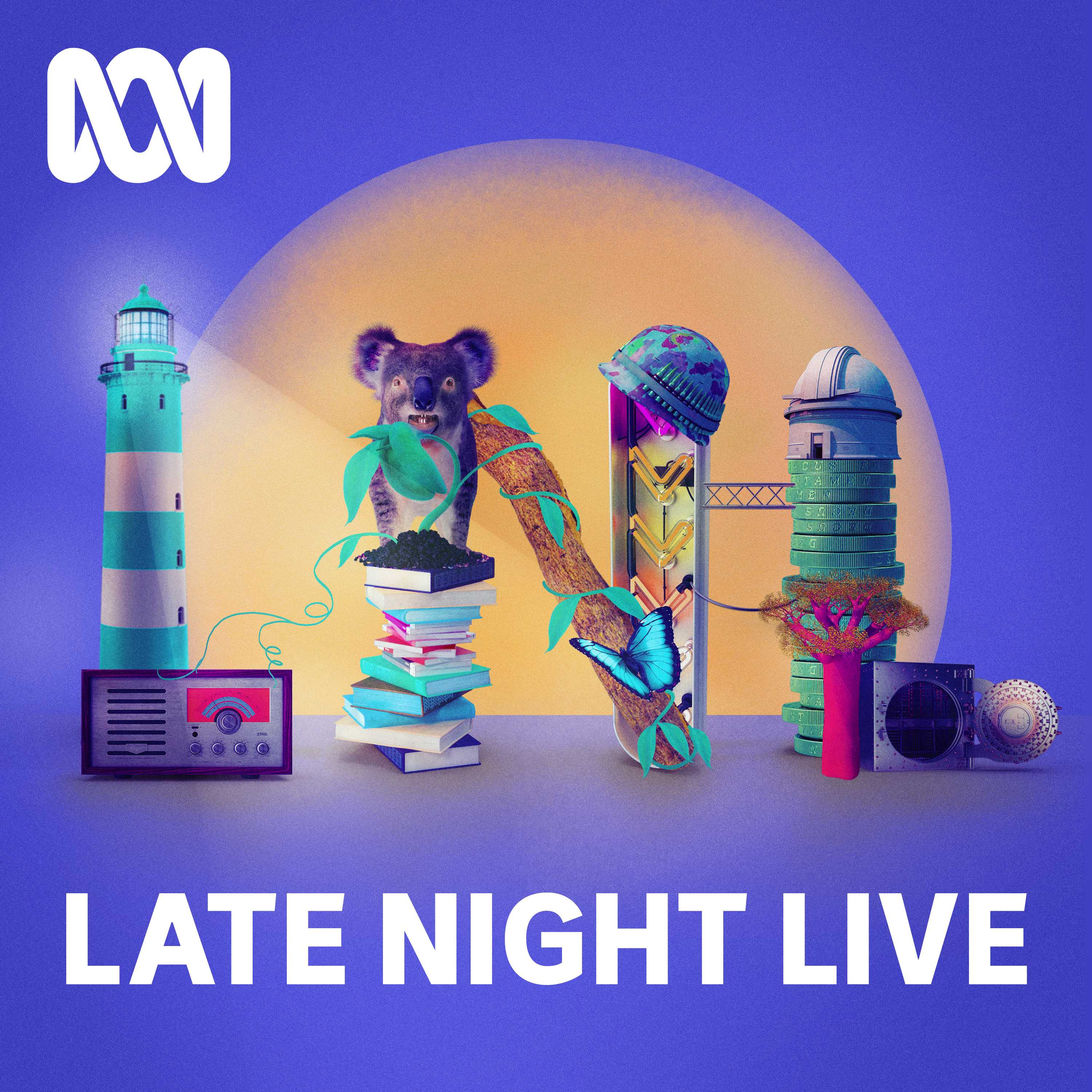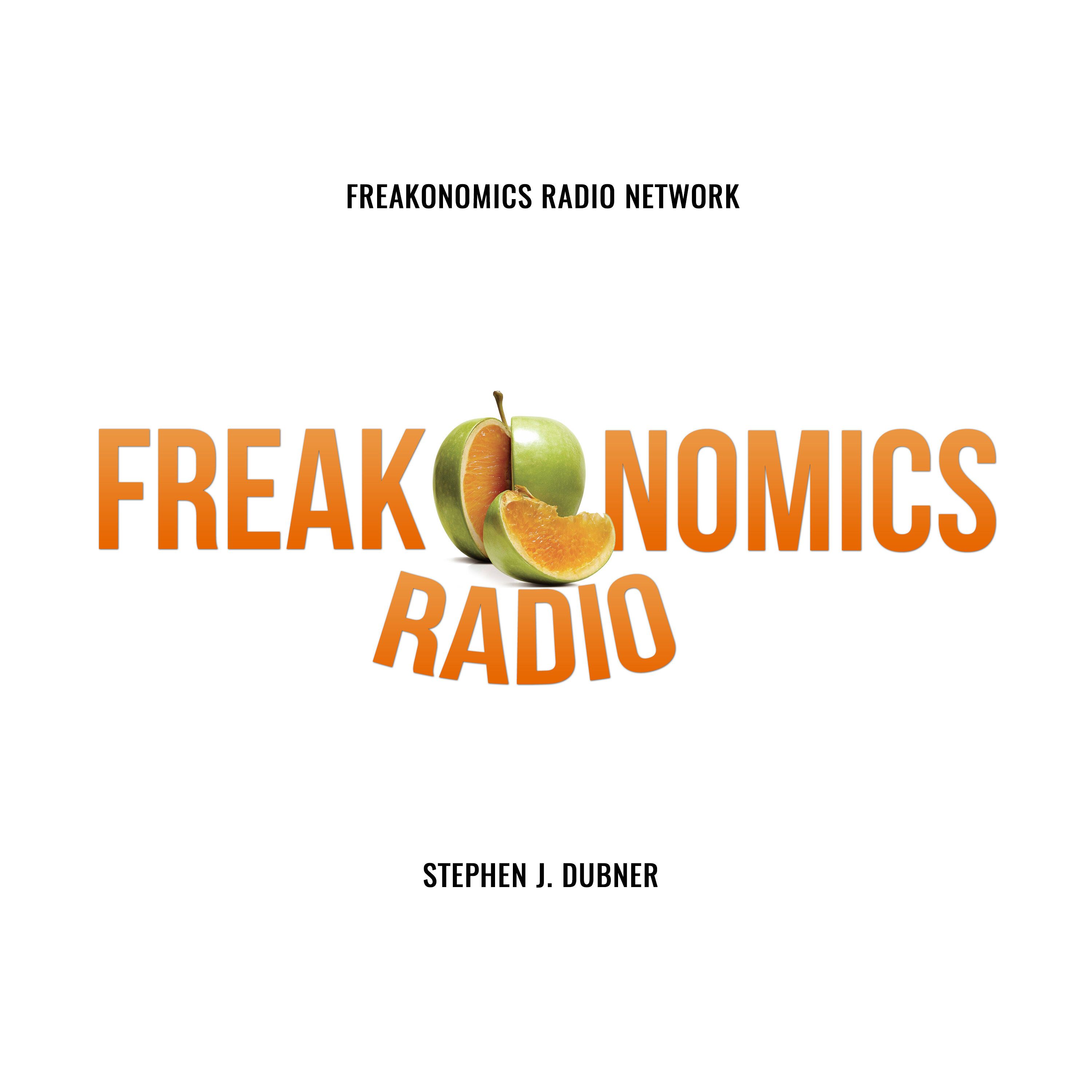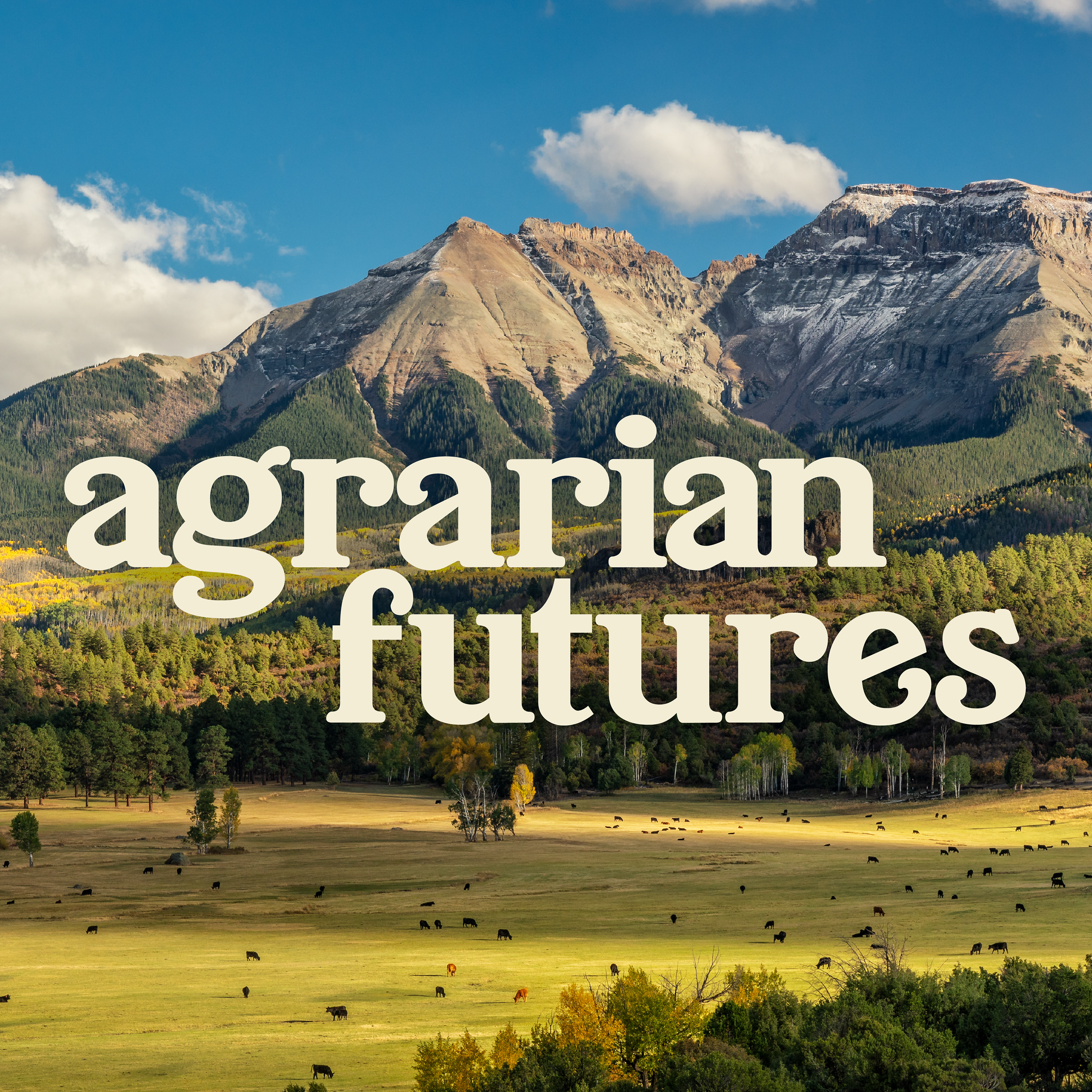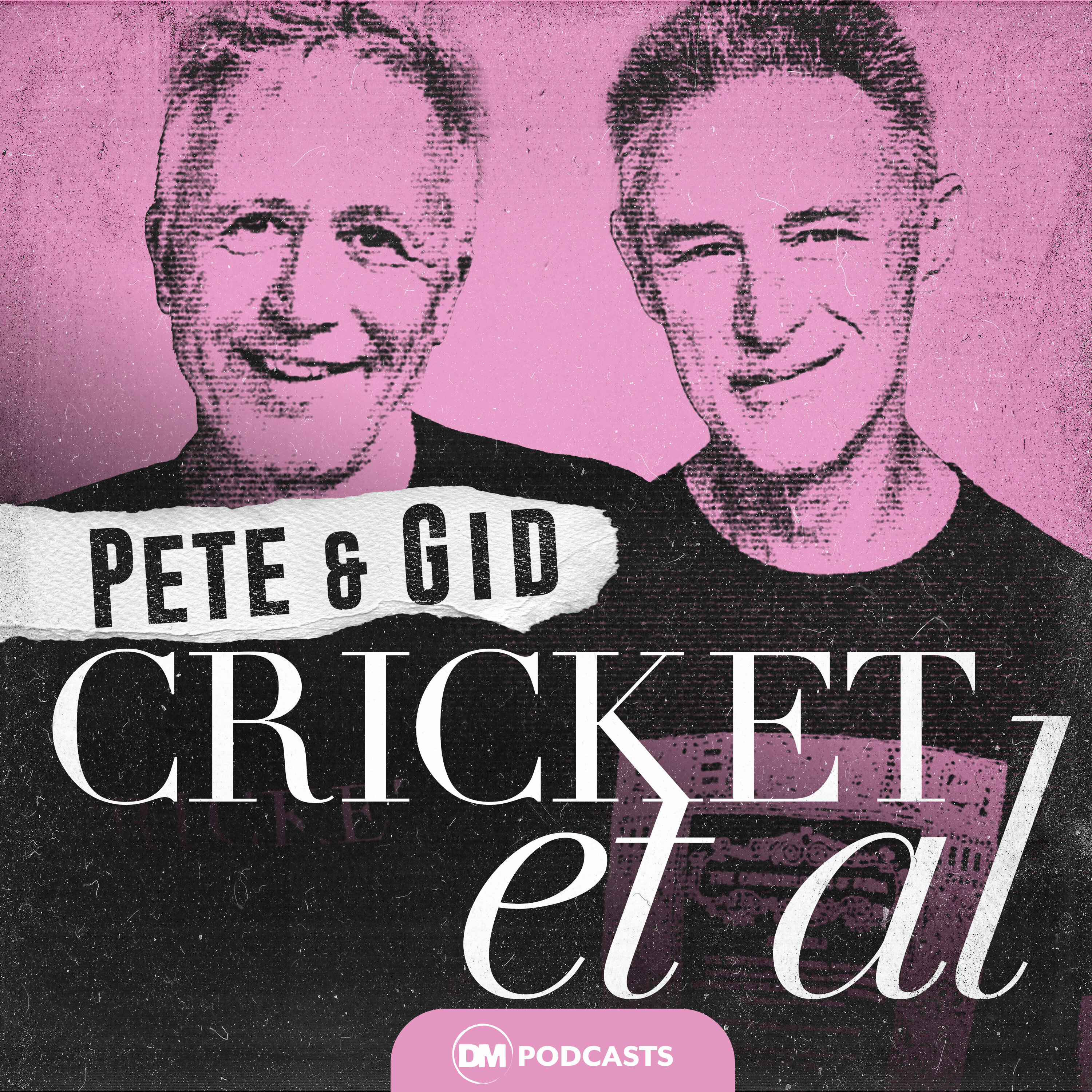
The RegenNarration Podcast
The RegenNarration podcast features the stories of a generation that is changing the story, enabling the regeneration of life on this planet. It’s ad-free, freely available and entirely listener-supported. You'll hear from high profile and grass-roots leaders from around Australia and the world, on how they're changing the stories we live by, and the systems we create in their mold. Along with often very personal tales of how they themselves are changing, in the places they call home. With award-winning host, Anthony James.
The RegenNarration Podcast
The Land Whisperer, Part 4: Patrick MacManaway's most impactful stories & next venture
Welcome to the fourth and final part of this special on-location recording with the 'land whisperer', Patrick MacManaway, in Burlington, Vermont.
ICYMI, the full episode was played more than most in its early days, but given it was a little over two and a half hours in length, I also wanted to offer it in distinct parts, for those of you who prefer to listen to it that way. There have been plenty of takers too, so I'm glad this suited a bunch of you.
We pick it up here where part 3 ended, at the Farmhouse that replaced McDonald's downtown. Then we head back to Patrick's garden, for some of the punchline, you might say - as he shares some of the most impactful stories from his work around the world. These include a look at the changing face of how academia is treating the work, and how the world at large is opening to it also.
And we close with news of his next collaboration with Australian legend in regenerative agriculture, Terry McCosker. Before Patrick, himself, takes us out with a tune.
Title image by Anthony James. For more behind the scenes, and to help keep the show on the road, become a supporting listener by one or more of the options below.
Thanks for listening.
Music:
The RegenNarration playlist (music chosen by my guests).
Pre-roll music: Heartland Rebel, by Steven Beddall (sourced from Artlist).
The RegenNarration podcast is independent, ad-free and freely available, thanks to the generous support of listeners like you. We'd love you to join us.
Become a paid subscriber to connect with your host, other listeners and exclusive benefits, on Patreon or the new Substack.
Or donate directly via the website (avoiding fees) or PayPal.
While you can also visit The RegenNarration shop. Come to an event. And please do share, rate and review the podcast.
Thanks for your support!
There almost needs to be a plaque out front, A plaque yeah, we run out.
Speaker 2:like us being fairly young, we run a lot of chains on them here. There was a Starbucks that closed. There was a Five Guys that didn't stay very long.
Speaker 1:Music to my ears. This is recording. Do you mind if I include this in the podcast? What's your name? I'm Kate Reid.
Speaker 2:Thanks a lot Kate Of course Inside or outside oh, if there's outside
Speaker 1:well, patrick, back at home, base in the garden where we started, with a lovely soundtrack in the background to boot. Firstly, thanks for lunch wow, so I have to share that. I had a Von Trapp grapefruit beer wow, amazing. And and you've told me the story of how it's the Von Trapp family from the Sound of Music, now well established in Vermont, and, yeah, the menu, incredible. So what a treat to visit there and such a great symbol. As we said, now we're back at home. Let's sign off with a couple more stories Before we go on to some of the stories of transformation you've been involved in, though just to tie off on the thread we were visiting before, on the shift over your journey and the academic field.
Speaker 1:There's been some shift there too. And the academic field there's been some shift there too. Indeed, the publication that came out of the university of your friend there, julia Wright you were saying that you penned an essay in, and Charlie Massey's previously missing chapter, quote unquote from Reid Warbler, the one that didn't make the cut for being a bit too pushing the envelope, perhaps a bit too much at the time made it into this publication too, out of a university. Something different's happening there too.
Speaker 2:Yes, and very exciting, I think, and also somewhat generational. There are now degrees in spirituality and agriculture and spirituality and environment and actually currently having a restructuring moment now, but places like Schumacher College in the UK, emerson College, I think we're seeing more and more academic interest and offerings in the area of holism, including holistic environmental studies, which is lovely. I think often, as you very well know, one slightly follows the money trail in terms of narratives and what's presented uh, in terms of narratives and what's presented, and so, for the most part, mainstream agricultural academia is funded by pharmaceutical, agrochemical companies and because they're funding the research, they're obviously then promoting their, their version of farming alongside of that. So I think the places where this kind of more holistic research is happening is probably not the mainstream agricultural campuses but either smaller schools or smaller departments catering to a vast hungry desire of the upcoming generation to, I don't want to say break the mould, but find a dawning of a new and sustainable way to go.
Speaker 2:I also think the climate narrative has been so dramatically emphasized and forced onto that generation coming into their 20s and going through academia now that there's a real sense of people wanting to learn how to do better and different and there's also a generation of landowners, property owners, who are coming to age either of inheritance or taking over established family businesses, who have a social, environmental awareness and consciousness and are moving into positions where they can invest either substantial acreage or sometimes substantial funds towards making that happen. So I think it's spreading rapidly. I know Southern Cross has Regen Ag on its menu and so it's popping up all over the place.
Speaker 2:It's popping up all over the place. It's popping up all over the place. I I think, ultimately, it always has to be grassroots, and that's where it belongs, because, um, whilst there's a philosophy that I think you and I are both very immersed in, of paradigm and thinking, it's in the application on the farm that we actually see why it's so beneficial, why I don't want to shoot on anybody, but why we should be doing it, what it's all about and why did our ancestors make such a fuss about it. What's that really about? There's the perfect segue, then. Well, yes, so, as you can imagine, many stories, but one, I think, very salient one that I do like to share is a story of plant and place.
Speaker 2:Whispering from the Cotswolds of England, which are very beautiful and, in the Roman period, created the sheep with the finest fleece in all of Europe.
Speaker 2:The Cotswold sheep was the most splendid thing and they had a very fine and delicate pile.
Speaker 2:So agricultural country Cotswolds actually a little bit same story as here in Vermont Big time sheep country, water powered woolen mills and then post woolen industry collapsed there. However, our story happens on the edge of a small, iconic village, at a very wonderful small-scale family dairy farm and family concern, organic milking, 20 cows once a day, once a day and able to make a living at that scale because their value add was cheese uh. They were award-winning cheese makers and also they had a retail shop in town, so they were able to do both value add and retail. Uh, and they had a small livery stable on on the side. So, as with a lot of small scale farms, uh finding ways to to integrate and um support the scale of their enterprise and their cows were their friends. On one occasion I was there and um the farmer uh was being harassed by his cheese making wife, who thought that he ought to be euthanizing a 23-year-old cow with one eye and he thought she was doing just fine and to leave her alone.
Speaker 2:So it was that level of you know scale. So I was in and out of that village regularly for a decade and became acquainted with them and no money ever changed hands. I worked on many occasions and I always came away with a bag full of cheese, and so that was our arrangement. But the story that I'm sharing with you now unfolds in an October, which of course in the UK is moving into autumn weather, and they had two next to each other fields of alfalfa lucerne, depending where you live and these two fields had been planted same day, same operator, same equipment, same seed, and had been held back as the last green forage before the cattle were going to shift on to dry hay and silage for winter.
Speaker 2:So they were very critical at this moment in the forage budget in this farm and they were doing holistic grazing and so moving wires, narrow strips, the cows moved across the first field of alfalfa and so the cattle are grazed through the first field over a period of about a week, moving gently with moving wires to create the high-density grazing benefits to the grasslands, and then they move into the second field and within two hours of the first strip of the second field, seven of their cows are showing signs of bloat, and bloat is something that farmers pay very, very close attention to when cattle are on alfalfa or leucine because the nutritional density and high nitrogen content of that plant. If the cow's microbiome doesn't totally get on top of it, they can become swollen to the point of exploding and dying in that way because from that central rumen.
Speaker 2:They can't pass gas either out the front or out the back, so it's a life-threatening condition, and when grazers move cattle onto that plant, therefore, they generally pay pretty close attention to see that that's going to go well. Therefore, they generally pay pretty close attention to see that that's going to go well. So these clouds were being closely watched. Seven of them showed signs of bloat, and so the cattle were pulled off the field and put into the barn and I was called, which obviously would be the thing to do. If you've got an indigestible field of alfalfa, is call the land whisperer. So I was in town, I was there within 15, 20 minutes and, um, what I did literally was to sit down and have a meditation with the field, in the field, and what's happening here is, um, very, very simple. Everybody has their own way of doing this. There's no right or wrong way to telepathically communicate with land or plants or animals. You just you do it in a way that you find works best for you. So for me, sitting quietly, moving into a peaceful space, and then what happens is we naturally connect with whatever we think about, and when we think about a thing with love and peacefulness, then the connection establishes one of close rapport and creativity potential in in that space. So in my imaginal space, my meditative, if you will, shamanic consciousness, I introduced into the circle of my thinking, effectively, a kitchen table chat of all interested parties. So first up, always one's own personal companion, angels and sort of celestial support team, and then, in this case, the spirit of the farm and the spirit of this particular field, the guiding intelligence of the soil, the gnomes as we would call them. The guiding intelligence is behind and within the plants, the diva of the plant, and then the spirit of the mob of cattle and also St Bridget, who is the Celtic patroness of domesticated animals. So I reckon she could help me out so effectively.
Speaker 2:Now I'm, in my mind, in a kitchen table situation, having invited the conscious witness and dialogue with these vibrational intelligences of the farm, and it was a bit like being in a really noisy out-of-control children's party. There was chaos, there was confusion and what I came to realize quite quickly was that the first field that the cows had been nutritionally supported by had full identity and awareness, conscious awareness of its role in the agricultural cycle and that it had been planted to be food for cows which would give milk, which would give cheese, which would nurture people, and then it would be replanted again in its successional rotation. So its giving itself to be highly nutritional cattle fodder was effectively ensuring its survival in that landscape because it was integrated as an agricultural crop. The second field didn't have that messaging hadn't gone through thought that it was wild and that these were feral herbivores that had shown up and that its survival was dependent on its make-and-go-away by poisoning them with toxic substances. And indeed plants have what are broadly called primary metabolites and secondary metabolites. And the primary metabolites are what they do to do their ordinary growing thing day to day. And then the secondary metabolites are a library or a catalogue of discretionary phenols, tannins, a range of chemicals that they can very rapidly manufacture and distribute within themselves to make themselves less attractive to the aphid or the locust or the cow or whatever might be the agent of its consumption.
Speaker 2:And we hear from those who work in South Africa of giraffes having to creep up with quiet, soft footfall, noiselessly from downwind, creep up on acacia trees and get in a graze and a browse, because as soon as the tree realizes that the giraffe is on it, it instantly fills its leaves with tannins which render it disgusting and unpalatable to a giraffe, and it tells all its neighborhood friends. So then it's breakfast over for giraffe and it's got to go and stalk another acacia tree to get second breakfast or the other half of the first one. I learned from an indigenous ethnobotanist here in the US about a ground cherry in Washington State which is delicious beyond belief. But if the plant spots a person creeping up on it, it almost instantly turns itself sour and disgusting, and so you literally again have to creep up from downwind, because it can smell you apparently, and then grab it quick before it spots that you're there. So plants, you and I, our stress response is run away. A plant obviously can't run away, so it has to change its expressed metabolism it's not its morphology but its physiology in order to have its survival process.
Speaker 2:So this was a very clear situation of this inaction. The first field had identity, the elementals, the nature, spirits, totally happy to be on the farm. Crop was great. Second field didn't realize he was part of farm, didn't really understand what agriculture was and had mobilized literally this lethal cow-killing secondary metabolic response. So I had a good old chat with them about this and everybody seemed happy once they understood what was going on and why it was going on, and within a very short period of time, much less time than it takes to tell the story, because telepath is happening at the speed of thought. So you you know, from start to finish this might actually only have taken 90 seconds, but it doesn't matter how long it takes, it matters that you take the time to do it. So chat with the field. By time everybody'd had tea and cake. A second round, uh, the kitchen table, everybody was song. We got thumbs up and smiles, and so I left them to it. We waited 12 hours. We put the cows back into the field and, without any problem at all, they grazed off the whole of the rest of the field in strips over the subsequent 10 days and were well nourished and happy and everything was good.
Speaker 2:So three steps back just to look at that story. Um, first of all, I didn't speak or move this. This was an internal, imaginal, meditational, shamanic communication that I was having in in situ. I've also done it long distance with maps and photographs, but in this case I was on site. So that's what I was doing was I was having a good, hard think. However, what's clear from what happened then is the plants understood me. Even though it was an internal thought, they telepathically received the message. Secondly, they understood it and had capacity to change themselves. And thirdly, they changed themselves at my request, for our convenience, to support the people living in that landscape. And those three things put together. Frankly, the first few times it happened to me it was so mind-blowing I really pretty much went to bed for three days until the world reorganised itself around that, because I knew this was possible. It was one of those.
Speaker 2:This was one of the first times that people had told me stories, people I'd trained with, but this was. I knew that I'd had a chat in my head and this whole prop had changed. So it leaves me in no doubt that nature can hear our thoughts. Nature can understand us telepathically, we can communicate and, as we were saying earlier in the podcast, they are happy to support us. You didn't need to do that. So in this telepathic communication, clearly the plants heard me, understood me, had capacity to change and chose to do so, and so it really impressed me of how we live, by their grace and generosity, and if they hadn't wanted people on the planet, they could have kept the thing lethal, and then all the cows would have died and the people would have perished and, you know, the flood would have come again as it were.
Speaker 2:Not my experience. Clear communication, massive cooperation and support Three steps back again from that, though. My hair is grey enough now that I remember growing up at a time when people did not have food allergies.
Speaker 1:Yeah, I remember that.
Speaker 2:Well now it's so common that it's all over every restaurant. Waiters here in the States automatically and I think legally have to ask if you have any food allergies before they serve you anything. And schools with peanut butter.
Speaker 1:Don't even have it near the campus.
Speaker 2:Where did this come from. So we can argue well, it's come from pesticides, fertilizers, things in the air, things in the water, residues, various degrees. But what I've realized by the work that I do is central to this. It's at the plant's discretion whether it's edible and nutritional or not, literally. And everybody always comments on how the food tastes better from your own garden than it ever can in the supermarket.
Speaker 1:Yes.
Speaker 2:And joining the dots up. That's where the personal touch comes. That's where people are in communion with their plants. They love their plants. There's a personal cooperation. The plant knows who its person is.
Speaker 2:Once we scale agriculture to a point where the farmer is no longer literally talking to their plants and their animals and their land, as example in this case, the land and the plants don't know what's happening and they mount a stress response. So I believe I've come to believe that unwittingly we're actually growing toxic food because we're not talking to the plants. And once you get your head around this, it's a bit of a big picture view. If I were to introduce a toxin into the food system, I would be considered criminally negligent and legally accountable. I'm not saying that we should sue our farmers for criminal negligence in producing toxic food, because they don't know that they're doing that and they don't know any different. But I think it's worth a bit of a three steps back. Stark, that crop was going to kill the cows and we chatted to it and then it was highly nutritious. And just to apply that to our food production systems, it's not just for the woolly-hatted hippies to go and hug trees, it's actually a survival necessity If we're going to eat food, you have to talk to it in order that it knows who you are, what your intentions are and, assuming you get its agreement, then you can safely go ahead and eat it. So I think you know that's a bit of an illustrative story that pulls a lot of threads together.
Speaker 2:That's what we used to call husbandry. Now it's agricultural science. Husbandry is a marriage of people and place. It's intimate, it's intuitive, it's emotional, it's communicative. So, six and a half thousand years of sustainable husbandry, a hundred years of non-sustainable agricultural science, it's the communication and the heart-feltness, it's literally the love that's in the middle.
Speaker 2:And I know from having worked for hundreds of farmers that they deeply, deeply, deeply love and care about their places and their crops and their animals. And they would be horrified to think that they're not doing best practice and horrified to think that they're not doing a good job and horrified to think that the food going off farm was poisonous. And so I think that's a very exciting thought that, uh, as I've been doing, um, as is happening more and more, this is very simple re-education. And it's not even re-education, it's, it's really a remembering. This is how our grandparents and great-grandparents, and six and a half thousand years of generations knew how to relate to land by observation and patient practice in the same place, for you know, 20 and 30 generations at a time. Talk about epigenetics yeah, well, thousands.
Speaker 2:In the case of australia, thousands so that uh story is, I think, of particular interest.
Speaker 1:Yes, and speaking of remembering the Navajo Denae man I was speaking with, I mentioned earlier he and his wife in the podcast with them recently and his wife being from Pennsylvania Mennonite family, she said she came to a point where I think she was a bit frustrated with something and and james said to her you need to speak to the plants more. And she sort of took that at face value. But then one day she really did and she heard. She heard it back, you know, um, she describes it well on the, on the podcast, you know, as this would be outsider, culturally speaking, conceptualizing herself as such. Yeah, not inherently, you know, consistent with what you're saying, not inherently an outsider at all, but culturally coming in and then applying what he had suggested was what was missing and it all changed. And they're not these aren't the only instances I've heard either and in very, very pragmatic ways and contexts. And now, yeah, we are reading and learning so much more about this, even in the popular domain, through books and other research that's coming out at the moment.
Speaker 2:So it just seemed to be an opening I think it is an opening, um, and it's a. It's a pretty simple message and, once you got it, um, it's one that you know is informative. I'd also share another plant-based story, this one from new south wales, uh, on a property that the farmers described it as rolls royce property with no spark plugs and they couldn't tell why it wasn't going well, because it should do all the yeah analyses of soil and minerals were really rather good.
Speaker 2:Um, it was in a relatively uh benign, uh part of of new south wales and, uh, they'd been doing high density grazing, crop rotations, biodynamics and radionics, all on the farm, but they just couldn't get it to perform in the way that they knew that it really should be able to. So they invited me to go and look and what was immediately perceptible to me, looking through my lens, was that the land was terribly, terribly, terribly subdued and held down, held back, overcast by residual energy from an aboriginal massacre that was well known to have occurred there during the period of colonization. And when I looked more deeply into it, through intuition, psychic scanning, dowsing, it became clear that we had earthbound souls, ghosts on property left over from. We had curses on property left over from the residual angst and emotion of events leading up to and the displacement. And then, a little bit like the alfalfa crop as described, the land did not have the concept of monoculture agriculture at all. It still thought that it was a wilderness and that its job was to support kangaroos and possums. So in that circumstance, quite a lot of the work was first just a healing of the spirit of place, ensuring that the ghosts were properly attended to and successfully repatriated to friends and family in the heavenly realm. The intense emotional residues resolved and blessed and cleared up. And then, same as with the alfalfa, just a good old chat with the land to explain agriculture as we were bringing it and the plants and animals that were being brought to the farm and that we were asking to be supported.
Speaker 2:And again there was an aha moment where the land got it and said yes and thanks for the clarity and we'll do everything we can. There was an aha moment where the land got it and said yes and thanks for the clarity and we'll do everything we can. And two weeks later they planted a sorghum crop and previously their best yield had been 1.6 tonnes per acre. Their average had been 1 tonne per acre. This one came in at 2.3 tonnes per acre, which was exciting, and it's not that it made it go faster, it was that. That's what that landscape should always been providing, so it was bringing it to its normal, healthy state.
Speaker 2:But even more exciting, aj, than the, than the crop yield, was that one of the landscape intelligence responses, once it fully understood what we were up to and that sorghum, what sorghum was and that sorghum was our ask.
Speaker 2:The landscape introduced into the crop so many spiders and wasps that they totally took care of the Heliothus grub, which is the normal predator on sorghum, and they were literally the only one of ten adjacent farmers all being served by the same agronomist not to have to spray for pesticides. So not only did we get this land up to its natural, healthy optimum of production, but we managed to integrate the intelligence so that it's completely self-managing. Um, and that for me again is, if that level of communication, cooperation is present, then that puts us into a truly sustainable and joyous relationship. And you know that the land did that for you because you asked it to do it, and so there's no thinking of it as a third-party, abstract, inanimate thing. If it's doing that after I asked it to do it, and it hasn't done it for the last 20 years, and it's not doing it on anybody else's place. This is a direct response to personal communications and just possibly the thinnest edge of the wedge of what's possible.
Speaker 2:I'd also just share a couple stories, because we can communicate with plants, we can communicate with animals. Terry's got a lovely story of wolf whispering in Montana that he may have shared with you.
Speaker 1:He didn't share that one on the podcast actually.
Speaker 2:He was able to communicate with three wolf pack alphas and negotiate that if the wolves had free access to all water, including the water in the cattle troughs, um, and not be shot at that they would leave the calves alone. And uh, indeed, as far as I know, seven, eight years later that's that's still holding up. In my recent trips to australia I had the pleasure of connecting with a wonderfully telepathic Queensland cattle farmer who was losing up to 80 calves per year to dingo strikes 8-0-80 calves which was devastating and stressful and also economically very challenging. And he described a story out one day in the ute and had his rifle and saw an alpha male and shot it dead and then really felt like something had to change because this wasn't good for anybody. So he was naturally psychopathic from birth, had rather dismissed it and marginalized it, but he switched it on and he checked in with the alpha dingoes and came to an arrangement that he would never shoot them again and let them roam the landscape as they wished, as long as they left his calves alone. And this held up for three years. And then, uh, one calf was bitten not killed but bitten and he checked back in with the dingoes to see what was going on and they said, uh, we know that happened, it wasn't us, it was a rogue dog. Came in from the north, wees, to see what was going on, and they said, uh, we know that happened, it wasn't us, it was a rogue dog. Came in from the north, we've chased it out of territory, we're still good, so this is all good.
Speaker 2:And then a few months later the dingoes come and knock on his door, the door of his mind, and they want to know whether he's still got his gun. And he says, yes, I put it in cupboard, but I still got it. And they say well, there's a cat in the territory and we can't catch it. It keeps running up a tree. We're wondering if you'd come and shoot it for us. He did go out three times looking for said cat, didn't find it, and then the dingoes came back to him again and said we've caught up to it, it's all taken care of of. You can put your gun away. So I've come across many people who've got as far as a negotiation mutual with the dingoes, but this was the first time that the dingoes came back and asked for a mafia hit, a competitive predator.
Speaker 1:But so I'm equally curious, then, if this is in us all, how would we people we go about tapping back in remembering, I mean, aside from calling you in, right, or maybe that is the thing, well, I'm already busy and it's a large world.
Speaker 2:So I run workshops and do classes and podcasts like your own. I think this is truly the most natural of all things that we can do. It's almost not a learned thing at all, aj, it's just we have a natural connection to everything. We have a specific connection to whatever we hold in mind and in heart. So, whether you need to talk to your car or your partner or your dog or your cow or your lawn or your cherry trees, the process is very simple. We just get into a peaceful space and lovingly hold the object of our connective intention in mind until we feel loving rapport established with it, and then at that point we have these internal conversations and we're talking to things that don't necessarily have a physical voice. So the return communication is by reciprocal telepathy, where the cow or the plant or the river or the weather is putting thoughts and images into your mind, and so we observe what comes into our mind. Quite literally, we observe the idea that arises, we observe the thought, the vision, the instinct, the feeling, and we can go backwards and forwards, like that of asking for an idea and getting one back, or asking what they think about bringing the sheep back in or planting carrots next, and then wait and see whether that feels right, whether we get different guidance, whether we get a go-ahead. So it's quite easy to project our thoughts.
Speaker 2:I find that perhaps the unfamiliar in the art is the deep listening of then, after having asked, just to sit with the question and allow the answer to emerge. And sometimes it's right there. Sometimes it comes in a dream the next night. Sometimes it shows up randomly in a comes in a dream the next night. Sometimes it shows up randomly in a conversation with a friend the following day. The universe has a myriad of ways of getting information to us and getting our intention attention. Um, once we've made it known that there's, there's guidance or information that we need, so I truly think it's when it works. It's effortless, it's one of those, and you're relaxing back into your most natural state of being a part of the family of things and having conversations arising that's a very.
Speaker 1:These are very consistent threads that come through time and time again over the seven years of doing this podcast and right through to even elite level sport, music, the flow state stuff. It's very interesting the ways that I think we're talking to the same stuff. We've mentioned Terry a little bit. You guys are still working together, but a bit of a different form, as I understand it.
Speaker 2:Terry, avant-garde pioneer, iconic saviour of Australian agriculture. He had started a journey of exploration of dowsing and land whispering before I met him. I was fortunate enough to be invited to the 20th annual conference where, for the first time, rcs really put land whispering out on its main stage, and there was so much interest that we then developed a program of three-day Level 1, three-day level two trainings for farmers, a two-day graduate circle where people working with it could come back and skill share and support each other, and RCS hosted that until 2023, at which point it made the most sense to allow the Quantum Leap program, which we call this, to be hosted by its own independent body so that it could be developed and extended beyond RCS's capacity to do that. So we feel very, very, very integrated and connected with RCS and really part of their family, of the menu, of everything that a farmer could possibly need to know, from grazing to profit to low-, low stress, stock handling and fairy whispering. So we were inside of the RCS body for 13, 14 years and now the same characters have created Quantum Leet, subtle Energy, which is a non-profit. That's allowing us to expand our range of offerings as well as the number of workshops, but it's very much a continuous thread and there was a marvellous moment at the conference when Terry and I were still getting to know each other and for some reason or other we both pulled our pendulums out of our pockets and found that we both had nuts on the ends of strings.
Speaker 1:So Terry and I bonded by showing each other our nuts in public in a dowsing sense, and never, never, looked back all right, I look forward to to seeing that come to fruition. Beautiful, very excited. All right, patrick, I think we've run the gamut and come through the large part of the day and it's probably even time to start getting dinner ready.
Speaker 2:But you know I end with talking about a piece of music, what comes to mind for you, I think, think, probably particularly in context, vivaldi's Four Seasons, I think, as a piece of music that really captures the spirit and essence of the many moods of a landscape, from its wild ferocity to its gentle peacefulness. It's a lovely piece of music and it was a great favourite as a child, and so I think I'd go for.
Speaker 1:Vivaldi, that's beautiful. When I was 18, I think, and on Struggle Street, and you know a long lover of rock and roll, but at 18, Vivaldi was the first classical music I really got into. Yeah, and Four Seasons was it.
Speaker 2:It's so accessible. It's so accessible.
Speaker 1:And so well, classic, it doesn't date. No, it doesn't. It's beautiful, wonderful Patrick.
Speaker 2:Thanks a lot, mate, it's great to be with you Absolute pleasure, lovely to meet you, lovely to have you here in Vermont and thank you so, so much for your interest in the work and being willing to share it with your audience.
Speaker 1:The music you're hearing is by Patrick McManoway. When I learned he played the penny whistle, I asked if he'd play it for us. He said he was out of breath and practice but, blessedly, wasn't too proud to let it fly. My name's Anthony James. Thanks for listening.
Speaker 3:© transcript Emily Beynon.



